Galleries
At Vienna Art Week, Subtlety Trumps Pomp and Olafur Eliasson’s Kaleidoscopic Spectacle
Can Vienna shake its nostalgic appeal and spotlight contemporary art?
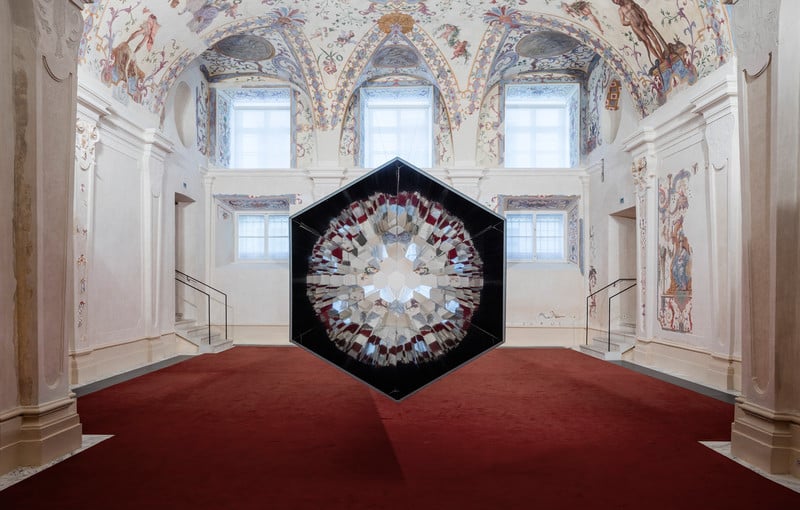
Photo: © VIENNA ART WEEK 2015
Can Vienna shake its nostalgic appeal and spotlight contemporary art?

Max Henry

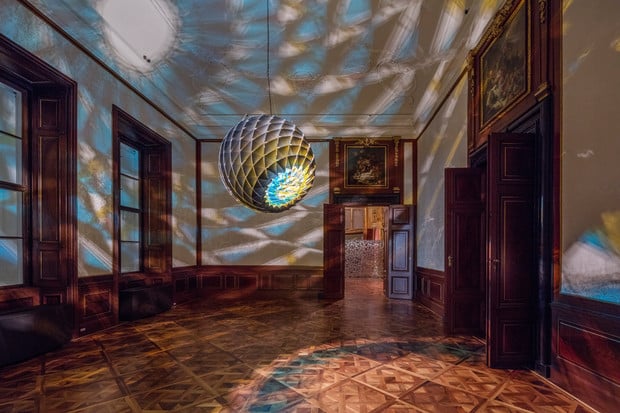
Olafur Eliasson New Berlin Sphere, (2009) Installation view, BAROQUE BAROQUE, The Winter Palace of Prince Eugene of Savoy, Vienna, 2015.
Photo: Anders Sune Berg Thyssen-Bornemisza Art Contemporary Collection, Vienna © 2009 Olafur Eliasson.
The annual Vienna Art Week commenced from November 16 – 22 during unseasonable warm temperatures. A plethora of programming and events—some 200 in total—included establishment institutions and galleries, independently run off-spaces, and open artist studios. Exhibition openings were bolstered by talks, film screenings, guided tours, and of course performances. A splashy opening party hosted by Dorotheum auction house lit the night up in scores of Sekt and the local brew.
In the revelries’ aftermath, an intense week of art viewing and numerous panel discussions highlighted the cultural primacy of contemporary art. Under the rubric of the art week’s socialistic theme of the “Common Good,” noted sociologist Saskia Sassen gave a talk called “At the Systemic Edge: Where even the material becomes invisible.” Time and again politics, economics, and activism were topics broached by lecturers.
Belgian philosopher, critic, and curator Dieter Lasage discussed the notion of political populism as related to the Greek crisis and its leftist protagonists at the Kunsthalle. An all female roundtable of curators at the Academy of Fine Arts talked about the ways of financing their operations and very existence. That was euphemism for navigating around the often untenable conditions that come along with strings-attached government funding. Touchingly, in the case of Çelenk Bafra, curator at the Istanbul Museum of Modern Art, she wistfully commented on failures, and the lessons gleaned from the administrations deeply troubling attitudes.
Europe’s refugee crisis, the inhumane Paris massacres, and institutionalized austerity policies thus make cultural exchange the last bulwark against outright barbarianism. And that’s the civilized world techno-sphere for you, now where’s the art???
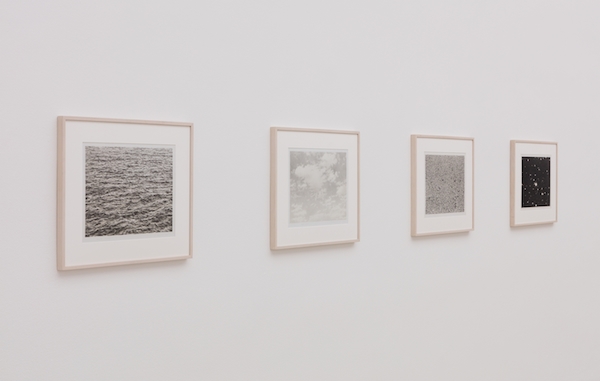
Vija CelminsUntitled Portfolio (1975).
Photo: Stephan Wyckoff.
Encountering Vija Celmins‘s exhibition of graphics at the Vienna Secession is a bit of a shock to the senses. When entering that immense, well-proportioned main hall the silence is deafening. With five decades of her graphic works hung in several groupings, the first gut instinct is to switch-off from all things digital. Immerse yourself in their subtleties and you’ll be rewarded with the sumptuous results of her process. The devil is in their details and it requires real looking time, a step back from the madding Wi-Fi world.
Celmins is renowned for a corpus of recurring imagery that stems from appropriated photographic sources and printed materials. The natural world and the cosmological are her subjects of studied interest. Her strength in printmaking is apparent and consistent throughout as seen in the earliest work Poppy 1, (1957-62) and the recent suite Untitled Ocean, (2015). The formats are small to medium-large and cunningly use dark grey tones and fields of black to effectively convey surface texture and embedded lines.
Untitled Portfolio: Ocean, Sky, Desert, Galaxy, (1975) is a prime example of the sensorial richness of lithographs made on handmade rag paper using multiple colors. Realism takes on a spatial otherness in Celmins’s mastery of her métier. They’re not coded like some of Jasper Johns’s grisaille compositions and with whom she shares a reticence in the construction of an image. Transforming two-dimensional images with phenomenological implications is transcendental. For her first Austrian solo in her autumn years, Vija Celmins is on top of her game, quietly humming along.
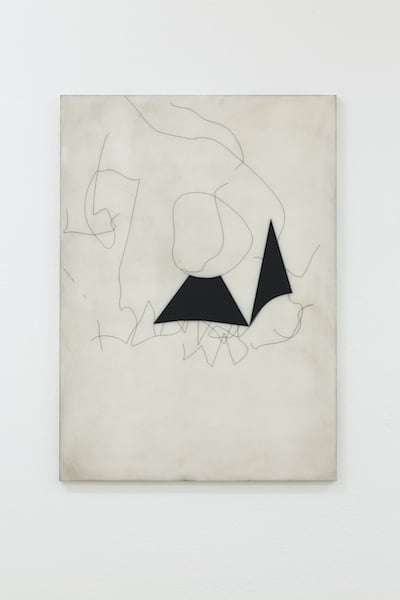
Julia Haller Ku Ku (2015).
Photo: courtesy Vienna Art Week.
Julia Haller is at that early ascendant stage of the art trajectory and already is building a cult status among her peers. As counterpoint to Celmins, she’s exhibiting in the downstairs gallery of Secession where seven smallish works hang. Breaking with the conventions of drawing and painting, Haller is more in line with the conceptual derring-do of Michael Krebber than painterly.
The “paintings” are produced on a mineral composite boards that appear as a veiny marble surface. Fine lines and shapes are milled into the surface, pigments and acrylic applied topped by a low sheen varnish. Calligraphic line and odd trapezoidal shapes contrast the distressed monochrome ground. It’s interesting to note the elder statesmen Celmins quit producing paintings herself, preferring the printed medium. Meanwhile, a young artist contends with her medium using some of the tactile materiality found in sculptural forms from her studies with Heimo Zobernig. Slowly and steadily, look for Haller’s international profile to increase in the near future.
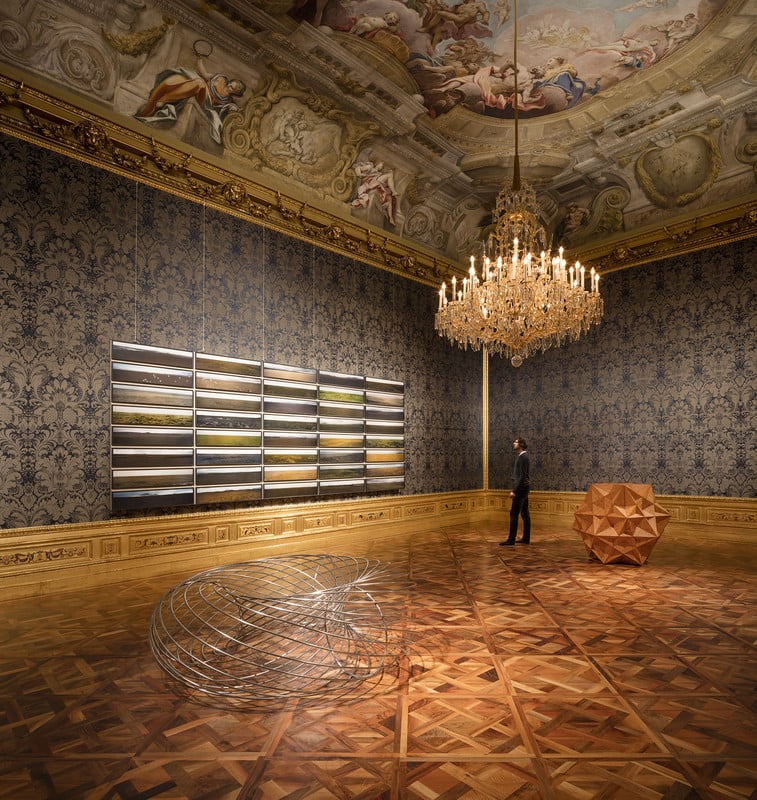
Olafur Eliasson, BAROQUE BAROQUE, The Winter Palace of Prince Eugene of Savoy, Vienna.
Photo: Anders Sune Berg, 2015 © 2015 Olafur Eliasson.
Baroque Baroque is a collaboration between TBA21 and the Belvedere Museum’s Winter Palace of Prince Eugene of Savoy. Works have been loaned from Thyssen-Bornemisza Art Contemporary (TBA21), Vienna, and the Juan & Patricia Vergez collection, Buenos Aires. Its first building phase encompassed the years 1696-98. In the grand environs of this restored gem, artist Olafur Eliasson has done a site-specific intervention alongside twenty works installed throughout the spaces.
After entering the premises through a courtyard, the first inclination is to approach the grand ceremonial staircase where the lurid Yellow Corridor (1997) beckons. The monofrequency lights reduce everything to a single color due to the elimination of the color spectrum, save for yellow. All of the details in the intricate moldings and ceiling fresco have a sharp contrast. What makes the piece so intriguing though is the grayish pallor the light affects on the complexion. Imagine a roomful of well-dressed zombies on the go, so perhaps there is a perverse morbid humor in phenomenology!

Olafur Eliasson, Wishes versus wonders, (2015) Installation view: BAROQUE BAROQUE, The Winter Palace of Prince Eugene of Savoy, Vienna.
Photo: Anders Sune Berg © 2015 Olafur Eliasson, Courtesy Olafur Eliasson; neugerriemschneider, Berlin; Tanya Bonakdar Gallery, New York.
In all of its scientific application towards perceptual shifts, light is his sensuous specialty. Indeed it was a real crowd pleaser on an opening night that launched a thousand selfies. Walking from space to space was a disorienting experience to say the least, a gauntlet of kaleidoscopic op-art where light patterns emerged into and out of the baroque period rooms. Fivefold tunnel (2000) is a long freestanding latticework shaped passageway that intersects two aligned enfilade spaces. A massive horizontal mirror skirts its entire length, reflecting the entirety of the vista of adjoining rooms. Viewers progressed single file as if in ritual movement snapping away with their phones.
For this big budget spectacle, Eliasson has inadvertently turned Prince Eugene’s lavish imperial residence into an equally elaborate kitsch funhouse.

Olafur Eliasson Kaleidoscope, (2001) Installation view: BAROQUE BAROQUE, The Winter Palace of Prince Eugene of Savoy, Vienna, 2015.
Photo: Anders Sune Berg The Juan & Patricia Vergez Collection © 2001 Olafur Eliasson.
The group show “Young Americans” opened at Franz Josefs Kai 3, a centrally located site formerly operated by BAWAG P.S.K. Contemporary. Continuing to host independent projects, the exhibition has been curated by Cornelis van Almsick and organized by Irene Gludowacz. Unfamiliar to Vienna audiences, the show’s eight artists have all established themselves working out of New York, Berlin, or L.A. The premise of the affect of technology and digital culture is a familiar one, but Vienna is slightly behind the curve of the newest of the new developments; it’s oftentimes slow to catch-up.
The recent New Museum Triennial Surround Audience thoroughly addressed this slipstream context. Fittingly, its co-curator Ryan Trecartin (b.1981) makes an appearance here with the 53 min. HD video Center Jenny (2013), initially screened as a work-in-progress at the Arsenale of the 2013 Venice Biennale. Shot in a tricked-out modular sound stage all of the girls are named Jenny and wear the same cheap khaki tank top/short outfits or pink hoodies. Standard Trecartin, its hyperactive jump cuts and garishly colored photography add up to a madcap take on cliques, peer pressure, and lost individualism. A few minutes of this transgressed overload turns to addictive voyeuristic watching; this artist always kicks the adrenals into high gear.

Installation view ay “Young Americans.”
Photo: courtesy Vienna Art Week.
Ken Okiishi takes the opposite tact, contemplative and classic as opposed to the abstractions on flat panel monitors he’s been producing. A suite of twelve framed digital photographs hark back to Dusseldorf school of photography and vintage William Eggleston. All of the photos are in fact titled after him. Okiishi revived a dormant project he’d left behind on hard drive then revisited and produced in 2014. Documenting the oddities seen in Berlin storefronts on a single West Berlin street, all images are titled William Eggleston on Pallasstrasse, (2007/2014).
They elicit a smile at this flâneur’s delight in the quotidian: single red billiard table with a poster of the greatest, Muhammed Ali; the signage in front of a low rent hair salon; an empty display vitrine with the creased hunters green velvet lining at the bottom; a bit of architecture, and a pair of potted plants on the windowsill. You can’t be put off by Okiishi’s apparent docu-cliché in such a poetic homage to the master of early color photography.
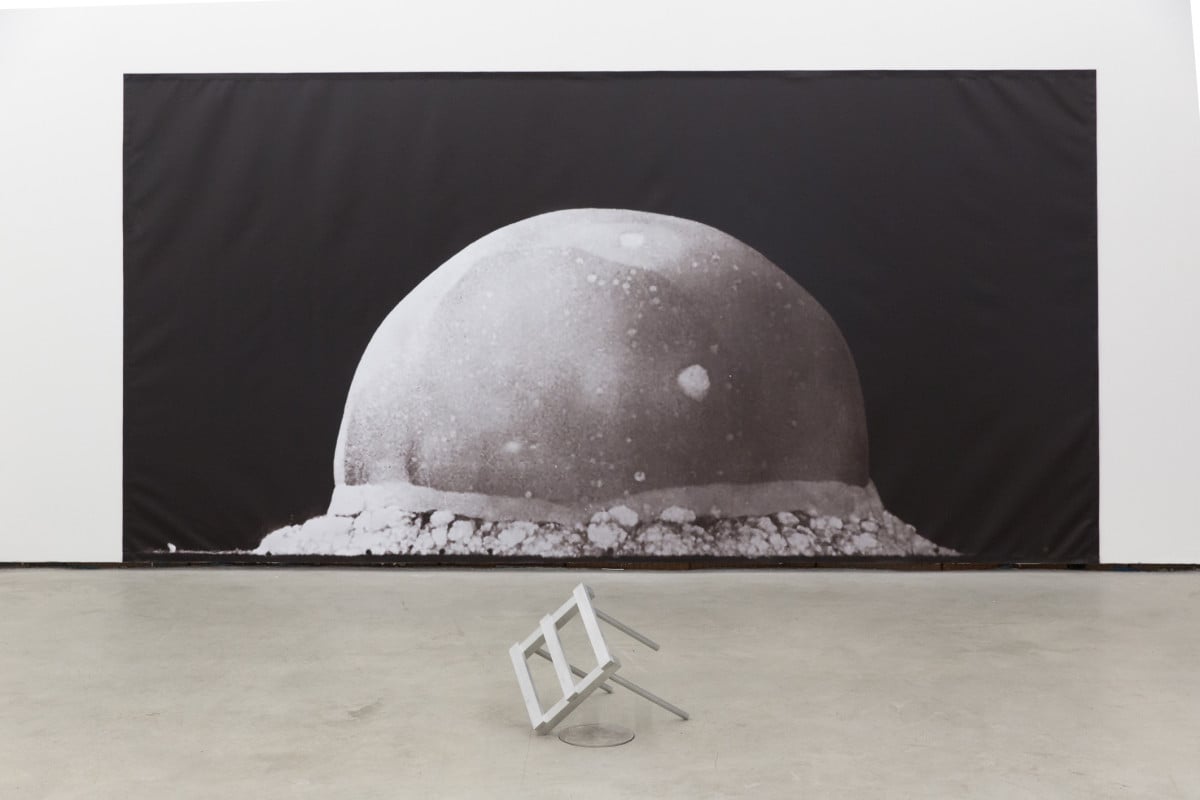
Installation View, “Young Americans.”
Photo: courtesy Vienna Art Week.
On another virtual hand, Petra Cortright has a degree of Internet fame in her self-exploitative webcam videos. She’s quite the performer and quick-change narcissist. Here she shows the silent 29 sec. sssss//////^^^^^^^^’, (2011), a banal view of her pretty bespectacled face that morphs into a distortion. Then fades away like a screen saver gone wrong.
More recent works were to be found in the cold corporate display style mixed media installations of Alex Ito’s The Principle of Hope, (2015) and Timur Si-Qin’s Premier Machinic Funerary: Prologue, (2014). Both love a good prefab component, commercially printed banners, and suggest a new age sci-fi. Queerly, Ito’s cool minimal lunar setting had a trio of taxidermy mice, each one set upon an aluminum disc on a bed of gravely concrete. Perhaps he’s cruelly suggesting that a future of overwrought synthetic technological structures will leave us all marooned as lab specimens for the horror of the Olympian master’s transhumanist utopia.